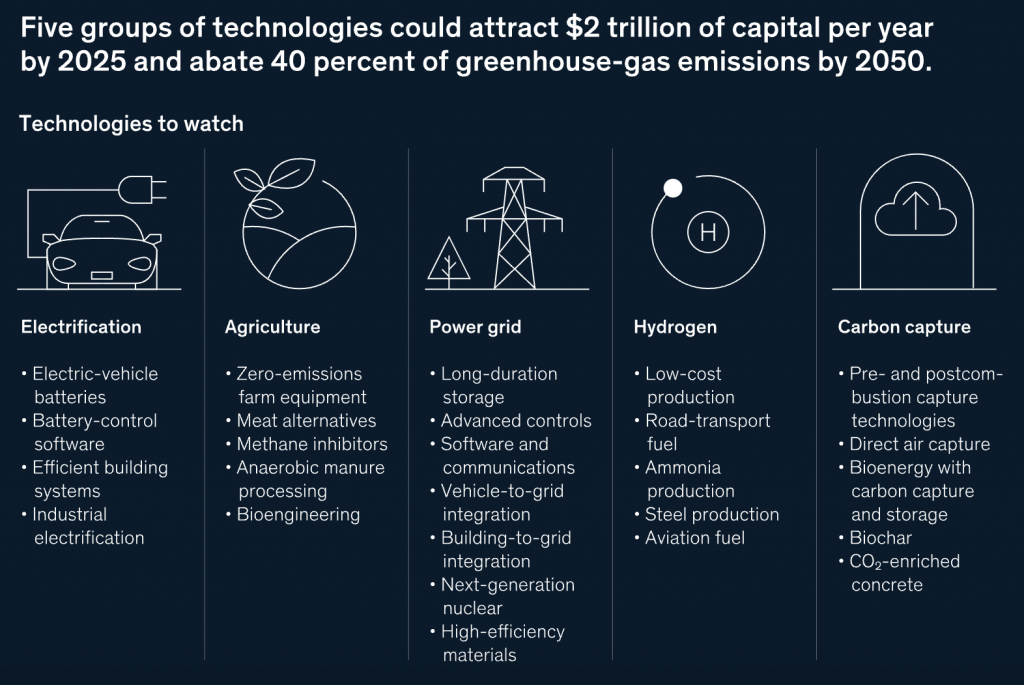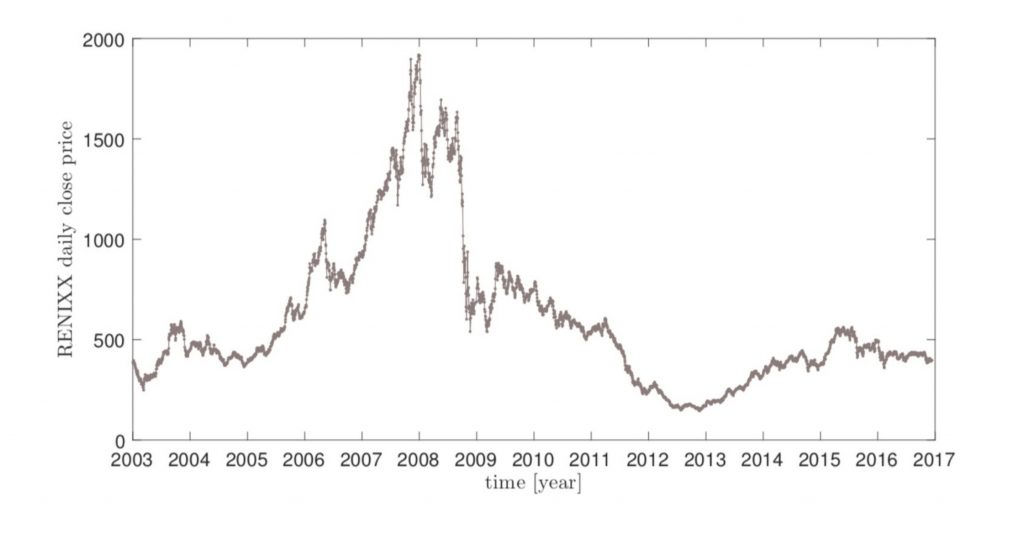On the surface, climate technology is a simple catch-all term for any type of technology that seeks to address climate change. Yet, for start-ups, investors, incubators, policymakers, decisionmakers and other stakeholders it is a way of distinguishing new technologies that will form part of the world’s decarbonization tool kit.
Climate technology is a multidisciplinary field that combines different areas of expertise, such as engineering, materials science, environmental science, economics, and policy whilst also referring to specific technologies and systems that can help mitigate or adapt to climate change.
In recent times the term has been used by a variety of stakeholders, from innovators to policymakers, in an effort to promote the development and transfer of technology-based solutions to climate change-related issues. This may include anything that helps reduce greenhouse gas emissions, increase the use of renewable energy, improve energy efficiency, and enhance carbon capture and storage for example.
To this end, the term is also acknowledged by the UNFCCC, which sees climate technology as all technologies that are used to address climate change, both for the reduction of emissions and the provision of new ways of adapting to a changing climate.
With the goal of developing and transferring climate technologies, parties to the UNFCCC process established the Technology Mechanism at COP16 in Cancun, Mexico. Under this framework, countries agreed to work towards establishing what their technology requirements are by implementing technology needs assessments.
Innovative climate technologies are considered critical for effective responses to the climate crisis, and must therefore feature in national climate plans. This was also acknowledged in the Paris Agreement, which also refers directly to climate technology development and transfer when discussing strategies for improving resilience to climate change and reducing GHG emissions.
In this way, climate technology is shown to be a key term not only in the multilateral and international spheres but also for national policy-making.
Do we need new technologies?
Why is it so important to develop new technologies? One of the main goals of climate technology is to support the transition to a low-carbon economy. This requires a significant shift in the way we produce, distribute and consume energy, as well as the way we design and operate buildings, transportation systems, and industrial processes.
The idea is that climate technology offers a range of solutions that can help us achieve these changes while maintaining economic growth, social equity, and environmental sustainability.
If “poor technology choices” are responsible for environmental destruction, then the idea is that new and better technologies can help fix a broken system. This means not only improving and updating current technologies and systems but also developing new ones that can speed up decarbonization and enable countries to meet their current and future climate objectives.
According to McKinsey research on Europe’s net-zero pathway, current climate technologies – meaning ones that are already mature – could, if brought to scale, “deliver about 60% of the emissions reductions that will be needed to stabilize the climate by 2050.” However, to make up the rest of the reductions, we will need “climate technologies that aren’t quite ready, including 25 to 30% from technologies that are demonstrated but not yet mature and another 10 to 15% from those still in R&D.”

The interaction between new and old climate technologies could provide the solution to preventing the worst effects of climate change as we strive for net zero.
Although this leaves a large question mark on whether we will be able to develop the appropriate technologies to reach our climate goals, new developments in fields such as AI, machine learning, and blockchain are changing the way we address climate change and could help speed up the development of long term solutions.
From clean tech to climate tech
The idea that technology can solve the climate crisis (or at least provide some vital solutions) is nothing new. In the early 2000s a surge in what was then known as clean tech investment, from both the private and public sectors led to a growing and lucrative industry and the development of numerous new clean technologies, such as solar, biofuels, batteries and other renewable energy sources.
However, just as private and public investors started to double down their investments – in the belief that clean tech would be the next frontier for technological innovation and, therefore, also a massive business opportunity – a combination of low oil prices and the 2008 financial crisis led to the 2006-2014 “cleantech crash”.

The new push for climate technology seeks to differentiate itself from the earlier clean tech phase and many start-ups, investors, and incubators working in the space have made the shift towards defining themselves as climate technology environmental start-ups rather than clean tech companies.
And it isn’t just about fear of association with the clean technology boom and bust. While climate technology and clean technology are often used interchangeably, there are also actual differences between what they encompass. Clean technology focuses on reducing pollution and waste in general, without necessarily targeting climate change specifically. For example, water treatment systems, air-purifying devices, and waste management processes are all examples of clean technologies that improve environmental quality.
Climate technology, on the other hand, has a more broad focus on adapting to and mitigating climate change, reducing greenhouse gas emissions and increasing resilience to extreme weather events. Climate technology is part of the larger field of sustainable technology, which aims to balance economic growth, environmental protection, and social equity.
Climate technology also addresses broader complexities of climate change by including a wide range of fields, from carbon sequestration in the oceans, forests, and soils to blockchain carbon coins, green hydrogen fuel, and virtual power plants. It applies an all hands on deck approach to solving climate change with tech.
The distinction between climate technology and clean technology is not always clear-cut, as many technologies have both environmental and climate benefits. For example, a water treatment plant that uses renewable energy to power its operations can be considered both clean and climate-friendly.
A world of opportunity
Just as clean technology before it, climate technology also presents significant economic opportunities. The market for clean and climate-friendly technologies is projected to grow exponentially in the coming decades. According to the International Renewable Energy Agency (IRENA), the transition to a low-carbon economy could create up to 28 million jobs globally by 2050, compared to about 9 million in the fossil fuel industry today. This could help address some of the social and economic challenges associated with climate change, such as poverty, inequality, and unemployment.
Climate technology is a critical tool for addressing climate change and promoting sustainable development. It offers a wide range of solutions that can help reduce greenhouse gas emissions, increase energy efficiency and resilience, and support economic growth.
However, climate technology on its own will not be sufficient to restore planetary balance and it must come with a combination of nature-based solutions, such as restoring natural carbon sinks and reducing deforestation, as well as other measures such as carbon pricing, which have the power to keep fossil fuels in the ground.






